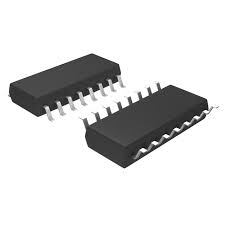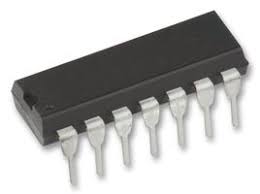With India at the cusp of a third telecom revolution following
the expected roll out of Long Term Evolution (LTE) networks to offer broadband
wireless services and ensure last mile connectivity, the semiconductor industry
is poised for a huge growth in 2012, as domestic telecom equipment vendors firm
up plans to enhance production to meet the growing local demand.

If 2011 saw the strengthening of the impetus for 'design-led manufacturing', the year 2012 will witness the commencement of the 'demand-led manufacturing' strategy in the country.

It means, several local telecom vendors, who have not been able to compete with the global giants so far, will have the first mover advantage in the Indian telecom market. The Electronics Design & Manufacturing (ESDM) sector in particular, including the semiconductor industry at the core, will witness major growth in the coming years as the Indian government plans to boost domestic production of telecom equipment to reduce the inflating import bill on electronics. Clearly, Telecommunications and Mobile Devices segment are set to drive the Indian semiconductor industry in 2012.

While Mobile Devices market share is likely to be 33.1 per cent, the Telecommunications market share will be approximately 29.9 per cent, according to the India Semiconductor Association (ISA)-Frost & Sullivan India Semiconductor Market Update for 2010-2012.

If 2011 saw the strengthening of the impetus for 'design-led manufacturing', the year 2012 will witness the commencement of the 'demand-led manufacturing' strategy in the country.
It means, several local telecom vendors, who have not been able to compete with the global giants so far, will have the first mover advantage in the Indian telecom market. The Electronics Design & Manufacturing (ESDM) sector in particular, including the semiconductor industry at the core, will witness major growth in the coming years as the Indian government plans to boost domestic production of telecom equipment to reduce the inflating import bill on electronics. Clearly, Telecommunications and Mobile Devices segment are set to drive the Indian semiconductor industry in 2012.
While Mobile Devices market share is likely to be 33.1 per cent, the Telecommunications market share will be approximately 29.9 per cent, according to the India Semiconductor Association (ISA)-Frost & Sullivan India Semiconductor Market Update for 2010-2012.
The findings are complemented by the plans of the Indian
government to meet 80 per cent of the Indian telecom sector demand for
equipment through domestic manufacturing by 2020. The value addition of the
same is being targeted at 65 per cent by 2020. In addition, the government
intends to provide preferential market access for domestically manufactured
telecommunication products including mobile devices and SIM cards. In other
words, the Indian semiconductor industry is set to witness a new revolution, on
a never-heard-before scale.

The India Semiconductor Association (ISA)-Frost & Sullivan India Semiconductor Market Update for 2010-2012, estimated the Total Available Market (TAM) revenue at US$ 3.88 billion. The same is expected to touch US$ 4.71 billion during 2012. However, the Telecommunications and Mobile Devices sectors are the fastest growing segments for the Indian semiconductor market.

The TAM revenue for telecom was US$ 998.5 million while Total Market (TM) was US$ 1587.3 million in 2011. The corresponding figures forecast for 2012 are US$ 1411.6 million and US$ 1915.3 million respectively.

The key drivers for the TM revenue are the National Broadband Plan and the expanding telecom infrastructure and enterprise markets. Similarly, for the TAM revenue, Electronic Manufacturing Services’ contribution to telecom infrastructure equipment manufacturing will be significant.

The India Semiconductor Association (ISA)-Frost & Sullivan India Semiconductor Market Update for 2010-2012, estimated the Total Available Market (TAM) revenue at US$ 3.88 billion. The same is expected to touch US$ 4.71 billion during 2012. However, the Telecommunications and Mobile Devices sectors are the fastest growing segments for the Indian semiconductor market.
The TAM revenue for telecom was US$ 998.5 million while Total Market (TM) was US$ 1587.3 million in 2011. The corresponding figures forecast for 2012 are US$ 1411.6 million and US$ 1915.3 million respectively.
The key drivers for the TM revenue are the National Broadband Plan and the expanding telecom infrastructure and enterprise markets. Similarly, for the TAM revenue, Electronic Manufacturing Services’ contribution to telecom infrastructure equipment manufacturing will be significant.
The Indian government has estimated that the national broadband
network would entail an investment of US$ 13.5 billion to provide 175 million
broadband connections, including 60 million wireless links by 2014. This in
itself is a separate growth segment for the Indian semiconductor industry.

The Telecom Regulatory Authority of India in its recommendations on ''Spectrum Management and Licensing Framework,'' estimated that the number of smart phones will be about 120 million by the year 2014. It indicates a high growth rate in wireless broadband segment. Most of the smart phone users will be expected to become wireless broadband subscribers by 2014. A lot of network evolution both in wireline and wireless segment is expected 2014, providing scope for the growth of the semiconductor industry on a wider scale. The Indian semiconductor market grew by a phenomenal 28.3 per cent in 2010. Incidentally, the global semiconductor market's cyclical trends had minimal impact on India.

At the global level, in 2011, the growth drivers for semiconductor consumption were clearly smart phones, media tablets and sold-state drives (SSDs). In the smart phone segment, firms such as Apple, Samsung and HTC, which improved their market share, significantly increased consumption of semiconductors.

Apple climbed to the No 1 position in 2011 from No 3 in 2010 as the largest customer of chip vendors. It is widely expected that the double dip US recession would continue in 2012 as well, hurting semiconductor sales at a global level.

But the emerging trends in electronics consumption in specific countries like India should keep the semiconductor industry stable this year. (PVG Menon is the president of India Semiconductor Association)

The Telecom Regulatory Authority of India in its recommendations on ''Spectrum Management and Licensing Framework,'' estimated that the number of smart phones will be about 120 million by the year 2014. It indicates a high growth rate in wireless broadband segment. Most of the smart phone users will be expected to become wireless broadband subscribers by 2014. A lot of network evolution both in wireline and wireless segment is expected 2014, providing scope for the growth of the semiconductor industry on a wider scale. The Indian semiconductor market grew by a phenomenal 28.3 per cent in 2010. Incidentally, the global semiconductor market's cyclical trends had minimal impact on India.
At the global level, in 2011, the growth drivers for semiconductor consumption were clearly smart phones, media tablets and sold-state drives (SSDs). In the smart phone segment, firms such as Apple, Samsung and HTC, which improved their market share, significantly increased consumption of semiconductors.
Apple climbed to the No 1 position in 2011 from No 3 in 2010 as the largest customer of chip vendors. It is widely expected that the double dip US recession would continue in 2012 as well, hurting semiconductor sales at a global level.
But the emerging trends in electronics consumption in specific countries like India should keep the semiconductor industry stable this year. (PVG Menon is the president of India Semiconductor Association)
Source:
CIOL Bureau

No comments:
Post a Comment